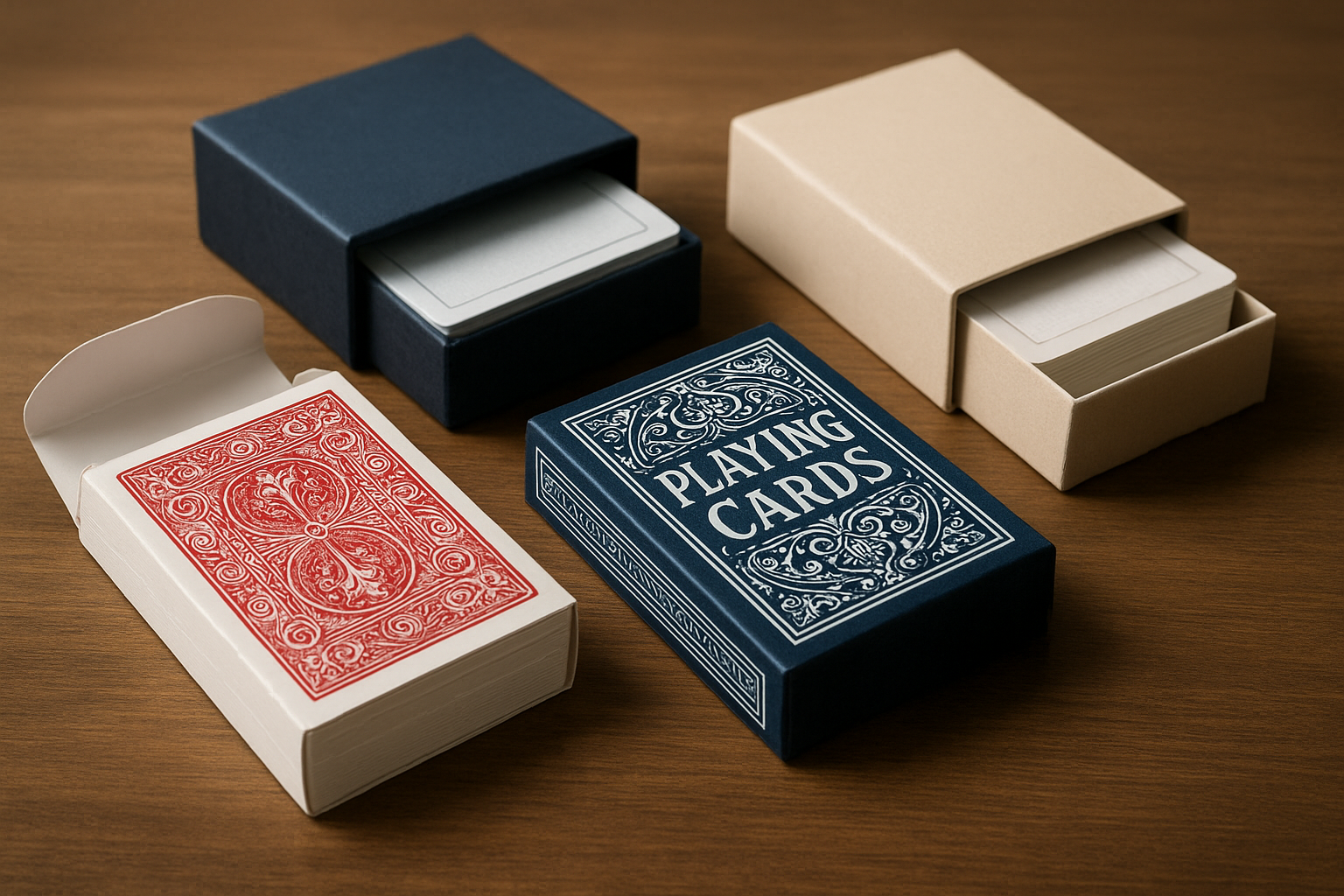The Ultimate Guide to Playing Card Packages and Dimensions

Playing cards are a benefit for people of all ages. They span cognitive health and offer opportunities for social bonding. To some extent, this activity nourishes physical health as well. There is plenty of strategic thinking involved in moving ahead and adapting to changing conditions. Whether the players’ goals are to win or not, ultimately this act entails some joyful moments.
Furthermore, these cards absolutely require some protection during transit. And this safety is probable with clever packaging. Bending, tearing and creasing are some potential damages that might occur. More includes exposure to various environmental conditions. Buyers ask for perfection and determining playing cards dimensions is the foundational step for progress. Hence, here is an all-encompassing guide on these packages and their sizes.
Standard Playing Cards Dimensions Applicable to Card Packaging Boxes
For domestic and professional use, there are two key standardized widths for these cards. One is poker size, which has 2.5 x 3.5 as dimensions in inches. Magic, some modern custom decks and casino games are a few use cases here. Next, there is the bridge size. There is only a slight difference: 2.25 x 3.5 inches. They are applicable to traditional games. Besides, they are popular for providing ease of holding numerous cards like standard 52 card deck.
In the US market, poker sizes are the most typical. On the other hand, the internal width and length must be larger than the playing cards dimensions. The purpose is to enhance the convenience of sliding in and out. Mimicking the exact dimension means increasing the friction and ultimately damaging the items.
Moreover, the depth or height is an imperative dimension too. It is dependent on the number of cards, which is typically fifty-four. And the thickness of cardstock. The latter has points or GSM as measuring units. The card and box manufacturers have to collectively work on calculating the accurate internal depth that’s crucial for packaging.
Playing Card Size Variations Beyond the Standard Deck
It’s like contemplating beyond common sizes. This showcases the expertise of the card brands. Their reliance on personalization has a positive impact on customer experience. It’s also a way to become distinct from mass-market utility cards. And lean towards specialty ones. The largest deviation in terms of size of playing cards is the oversized ones. The packaging has to safeguard the detailed artwork. Therefore, these custom-fit boxes often lie under premium packaging. The prime example apt here is tarot cards.
Conversely, the jumbo index is 3.5 x 5 inches or even larger in terms of dimensions. Their packaging deserves elite treatment as well. This is mainly due to their use in magic and presentations. Third is the dimension of square cards that has become famous for modern card games. They require a specific die-cut tooling too.
Mini cards or travel decks are around 1.75 x 2.5 inches. They are very affordable tuck boxes. And their use is appreciable for promotions and travel games. Individuals can value their gifting nature or include them in bigger gift sets. Lastly, the trading card game size is very much like poker size. Their role is to accommodate a sleeved card size.
Packaging Styles & Materials for the Utmost Customer Experience
We had to encompass the overall buyer experience in our guide too. Why? Due to the topic’s demand. Playing cards packaging boxes are the very first point of interaction for your audience. Their style and material exhibit durability as well as brand prestige. And eventually, customer satisfaction is essential for the business’s growth.
So, the most standard style is tuck boxes. It’s an economical solution for card brands. And it’s ideal for mass-market decks and retail environments. For the end users, there is enhanced convenience. They can effortlessly open and close these boxes. Also, they are robust and functional for repeated use.
Moreover, two-piece rigid boxes are more premium. These card boxes have two separate components. However, they are built with the aid of thick paperboard. Luxury brands or those manufacturing gift items can confidently rely on this packaging. At the customer’s end, it’s the connection to luxuriousness and product protection. They can even store these boxes for a longer period of time without fretting about their quality.
Specialty styles exist as well and they are more modernized as well as distinctive. The perfect example of such sophistication is magnetic flap boxes. They have a secret hidden magnet for securely closing the lid. Additionally, custom cardboard packaging boxes can be turned into a piece of art. For instance, by using matte or gloss lamination. Or giving a premium texture with the help of debossing, embossing or even both.
Why Precise Playing Cards Dimensions Are An Important Consideration for Businesses
This step is crucial for cost control. The key is to reduce waste. This works for environmental benefit as well. A specialized steel tool called a die cutter is used to cut the precise sizes. If not, the manufacturing process will lead to cut-off artwork and uneven borders. Therefore, the brands might encounter considerable financial loss. This can even delay the production.
Moreover, excessive material can lead to wasted space in warehouses. All sorts of card boxes, even when they are business card boxes wholesale, should have precise measurements. Too large or too tight packaging will never fit the cards efficiently. In the end, these issues lead to increased shipping costs.
Furthermore, the perfect fit is essential for card protection too. The boxes being too loose can encourage cards to shift and eventually make the packaging low quality. Alternatively, the tightness elevates friction and the cards are thus harder to slip in or out. This frustrates the users and motivates them to pick your competitors.
Relevant Packaging Design & Production Terminologies
- We already mentioned GSM and points somewhere in our article on playing cards dimensions. GSM is basically grams per square meter and is the measurement of cardboard density as well as weight. If this value is high, it means that the material will be more robust and thicker.
- Conversely, the point is a US measurement for card thickness and is mainly for cardboard stock.
- Another useful term is die line, which is a diagram that portrays the exact shape and fold lines for customized packaging.
- Bleed is the area that goes beyond the final trim edge of the card.
- Lamination is the coating applied to the surface of these boxes. Its purpose is to offer protection as well as some sort of effect.
For ordering high-end card boxes with all the necessary and creative elements, you need to pick a custom packaging supplier. We will surely cite our brand for your convenience. Boxit Packages has a unique and compelling reputation in personalized packaging. No matter what style, add-on or quantity you require, we are always here for complete assistance.
Conclusion
The guide that we just posted covered various aspects concerning playing cards dimensions. We made sure that you are adequately knowledgeable before contacting a trusted supplier like us. For example, there were some standard dimensions above, in conjunction with packaging styles apt for an elevated buyer experience. Additionally, we discussed the significance of precise dimensions and relevant terms to card design or manufacturing.



.jpg)